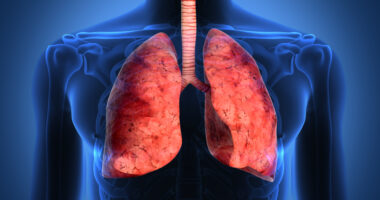Keeping new year’s resolutions that affect pulmonary fibrosis
How I've maintained my changing exercise goals in caring for my IPF

Do you make resolutions for the new year? A revealing joke on the subject has been around for years. In it, an entrepreneur opens and stocks a gym on New Year’s Day to support those who’ve made resolutions to exercise. After the first two weeks, though, the gym equipment is removed, and the venture becomes a full-service bar. Even the best intentions can go awry.
When I was diagnosed with idiopathic pulmonary fibrosis (IPF) in January 2017, I knew I’d need to make changes to my lifestyle, including starting a better exercise program. I was then in a high-stress, high-responsibility role as a corporate senior vice president. I needed to focus on my health, and as part of that, I assessed my ability to perform my job given my health constraints. In September of that year, I was considered disabled and left the workforce.
By the time January 2018 came around, I’d begun working to fight IPF for as long and as hard as I could. That would be my resolution. My insurance allowed me to have pulmonary rehabilitation for as long as my care team felt it was beneficial. It wasn’t a formal resolution. It was what I needed to do, and I committed myself to see it through.
When the respiratory therapist determined I could maintain my readiness on my own, I left the formal program. Since the pulmonary rehabilitation program at the University of Virginia Health University Hospital had a maintenance program that allowed me to use its facility and equipment at a nominal monthly cost, I continued my work there.
As my IPF continued to progress, the program became more difficult; however, I’d made a commitment to myself to stick with it. I was working out or walking every day. During the winter of 2020-21, I was up to 7 liters per minute (LPM) of oxygen to make my daily walks. (The standard LPM to start oxygen therapy is 2.) I’d become quite adept at looking at the tank gauge to determine if I had enough supplemental oxygen to walk for 30 minutes, which was about 210 liters.
Ten days after I received a bilateral lung transplant in July 2021, I was discharged from the hospital, where I’d been able to walk on the unit. I returned to pulmonary rehabilitation immediately upon my discharge.
Do resolutions work for you?
What resolutions did you make for 2025? Exercise? Relationships? Reading? Regardless of the resolution, I found it became clearer if I verbalized it. If you make a resolution, ask yourself how completing it will benefit you.
For me, exercise contributed to maintaining my strength before and after my transplant. I’m happy to report that I continue to commit to that resolution. In 2024, I started logging the distance I walked; from Jan. 19, I walked more than 1,400 miles through Dec. 31.
If you’re making resolutions, do you track your progress? Do you need an accountability partner to check on you?
Resolutions, ideally, should have two components. First, they must be attainable. If you resolve to run in an organized road race, for example, and you’re not a conditioned runner, you may want to put off a half-marathon and start with no more than a 5K. Second, you’ll want to have a form of measurement to track your progress toward your resolution. In the past year, I used my Fitbit to track the number of steps and distance I traveled before entering those figures into an Excel spreadsheet.
Finally, give yourself some grace. There will be days when you cannot reach your goal. On those days, record the reason, such as weather, medical procedures, or doctor appointments. I knew on the day of a bronchoscopy, for example, that I wouldn’t meet my goal. The bronchoscopy took priority.
If you make a resolution that’s important to you, stick to it. I did that with exercise. It’s how I can make every breath count.
Please share any resolutions you’ve made in the comments below.
Note: Pulmonary Fibrosis News is strictly a news and information website about the disease. It does not provide medical advice, diagnosis, or treatment. This content is not intended to be a substitute for professional medical advice, diagnosis, or treatment. Always seek the advice of your physician or other qualified health provider with any questions you may have regarding a medical condition. Never disregard professional medical advice or delay in seeking it because of something you have read on this website. The opinions expressed in this column are not those of Pulmonary Fibrosis News or its parent company, Bionews, and are intended to spark discussion about issues pertaining to pulmonary fibrosis.









Leave a comment
Fill in the required fields to post. Your email address will not be published.